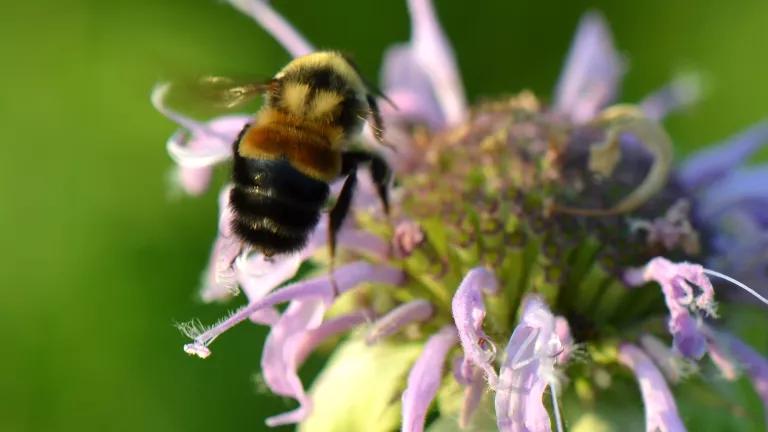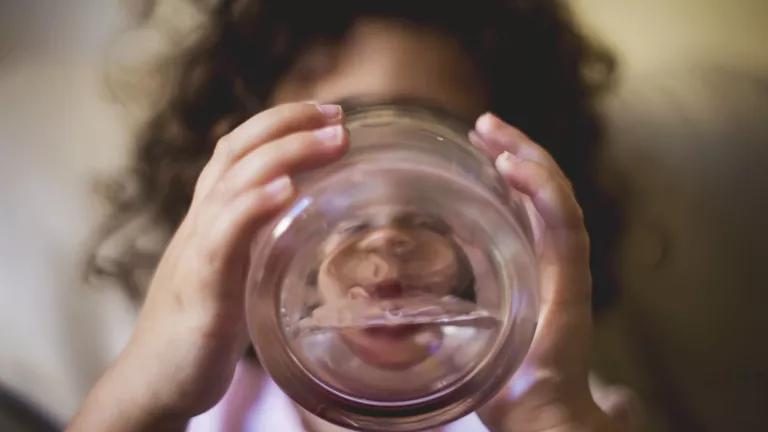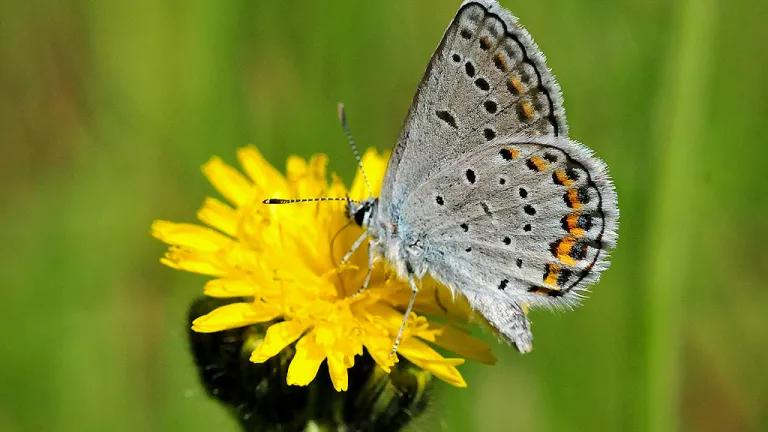Pollinators Notch Big Wins in Minnesota
In a historic 2023 session, Minnesota reined in pesticide use, increased pollinator habitat, and built momentum toward additional protections.
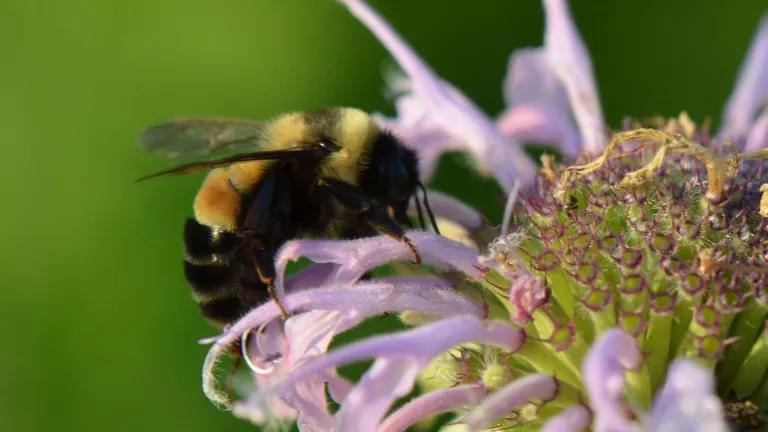
There’s much to buzz about at the end of Minnesota’s legislative session this year, with Tim Walz signing into law several important, long-fought wins for pollinators. The session also marks continued momentum for much-needed policies to rein in unregulated and widespread use of pesticide-treated seeds—which is decimating pollinators and hollowing out ecosystems.
Minnesota’s Neonic Problem
Neonicotinoid pesticides, or “neonics,” are the most-used insecticides nationwide, and twenty years of research identifies them as a leading cause of mass bee and broader pollinator declines. The U.S. Fish and Wildlife Service has even identified neonic use as one of the leading threats to Minnesota’s state bee, the rusty patched bumble bee, which has disappeared from 87% of its range in just the past two decades. And EPA recently predicted that continued, widespread neonic use is pushing the rusty patched bumble bee—and over 200 additional endangered and threatened species—closer to extinction.
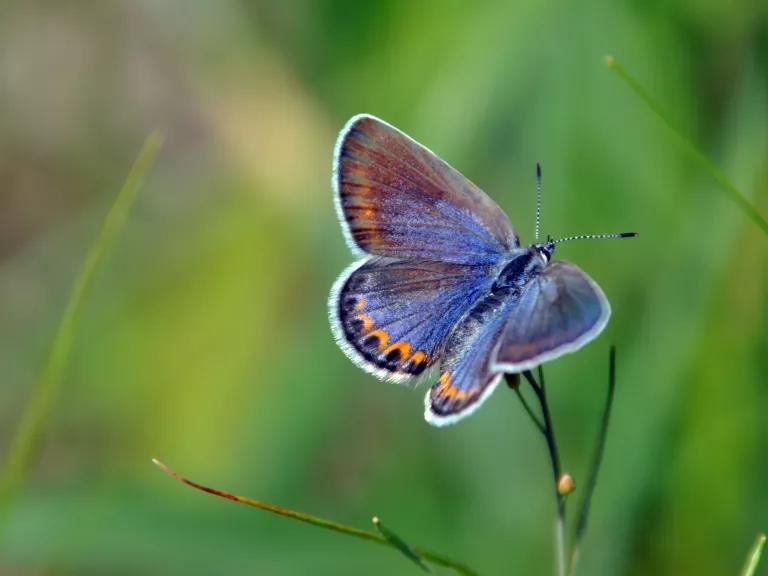
A female Karner blue butterfly at Necedah National Wildlife Refuge in Juneau County, Wisconsin. This endangered butterfly, imperiled by neonic use, is also found in parts of Minnesota.
The findings aren’t surprising; neonics are some of the most potent insecticides ever created and appear all over Minnesota. They are applied to millions of acres each year, approved for use on dozens of crops as well as lawns, parks, trees, and gardens in urban and suburban areas. As a result, the Minnesota Department of Natural Resources (DNR) has detected neonics in 94% of deer tested across the state, with over two thirds at levels that have been linked with developmental harms. That’s up from 61% just two years before, indicating widespread and worsening contamination with these mobile and persistent pesticides. State water testing confirms that neonics are commonly found in Minnesota’s surface waters, groundwater, and even rainwater.
The Good News
This session, Minnesota enacted a number of bills to protect pollinators from neonics and other bee-toxic pesticides. Here are a few of the highlights:
Local Control of Pesticide Regulation: Championed by Pollinate Minnesota and NRDC, a new law allows certain municipalities to prohibit or restrict use of neonics and other bee-harmful pesticides. Currently, Minnesota and many other states prohibit cities and municipalities from imposing local restrictions on pesticide use. This bill, ultimately passed into law through the Environment Appropriations bill, returns power to communities to protect themselves and their local wildlife from pesticides, and is expected to lead to less harmful pesticide use in metropolitan areas like the Twin Cities.
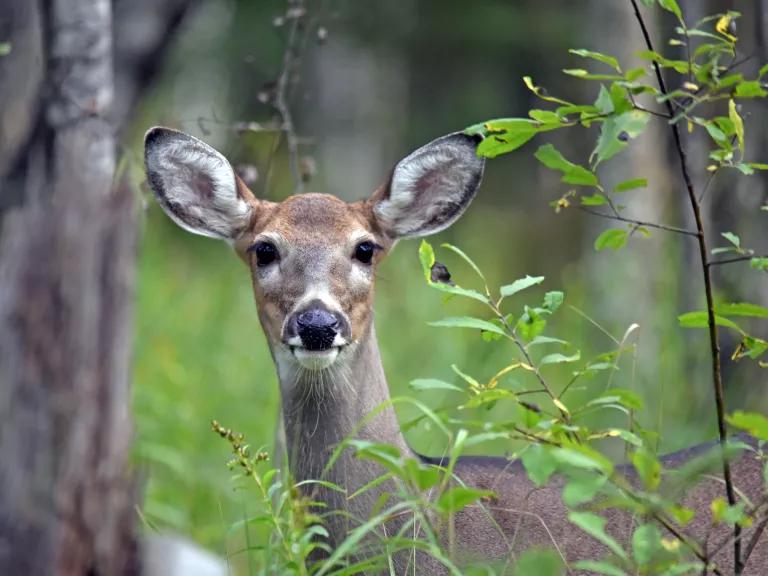
Banning Neonics and Chlorpyrifos on State Lands: A product of years of advocacy by Pollinator Friendly Alliance, Pesticide Action Network, Pollinate Minnesota, NRDC, and other partners, a new law prohibits use of neonics and chlorpyrifos, a dangerous organophosphate pesticide banned for use in agriculture by EPA, on lands managed by the Minnesota Department of Natural Resources (DNR). The law ensures that over 5.6 million acres of Minnesota land—about 11% of the state’s area—will be protected from these harmful insecticides.
The Longer Fight
Although there’s much more to celebrate—including increased funding for pollinator conservation, a program for developing pollinator habitat along highways, restrictions on PFAS-containing pesticides, and more—one disappointment is that the legislature did not pass HF 2472, a groundbreaking program for regulation of pesticide-coated crop seeds. These seeds represent the number one source of neonic pollution in Minnesota—covering upwards of 12 million acres of Minnesota farmland each year.
Neonic seed coatings are designed to be soaked up through the roots of the growing plant—permeating it and making all its parts toxic to insects. The problem, however, is that only 2-5% of the chemicals are absorbed, leaving the other 95% in the environment, where they are easily carried by rain and irrigation water to contaminate new soils, waters, and even wild plants. With just one neonic-coated corn seed having enough active ingredient to kill a quarter million bees, and 30,000 seeds planted per acre, the math gets ugly quickly.
Adding insult to injury, research shows that the most common uses of neonic seed treatments—like on corn and soybean—provide no net economic benefits to farmers. They may even hurt farmers by degrading soil health and killing off beneficial insects that prey on crop pests.
Because of a loophole in both federal and state pesticide law, treated seeds are not regulated as pesticides. This means that regulations designed protect people and ecosystems from the harms of pesticides simply don’t apply to treated seeds.
But in this near-unprecedented session, even this setback comes with a silver lining: the legislature passed other, more incremental legislation that directs the Department of Agriculture to take steps to ensure that treated seeds are used and discarded safely. NRDC will be working to ensure that this legislation results in the most protective regulations possible.
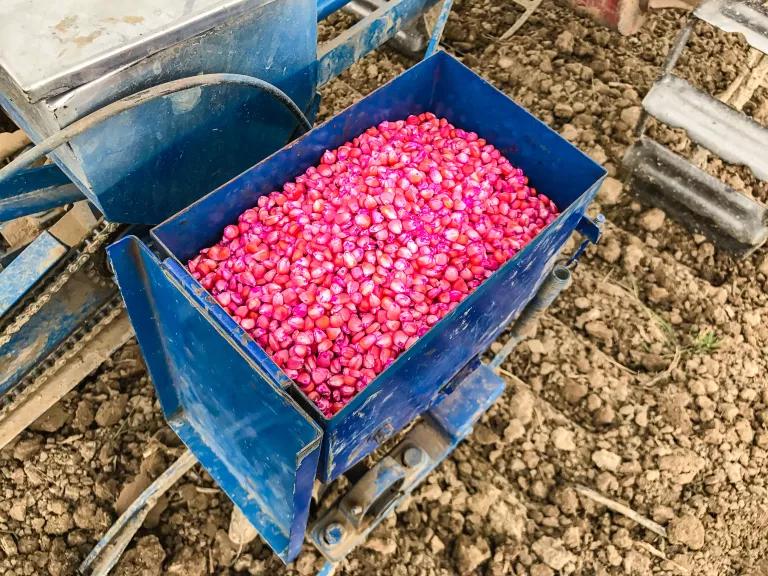
What’s Next
This session, Minnesota has made significant strides to make the state a safer place for pollinators. Thanks to champions like Representatives Rick Hansen, Brad Tabke, and Samantha Vang, Senator Mary Kunesh, and many more, the rusty patched bumble bee can rest assured that it will have more native flowers on which to forage, and that those flowers are less likely to contain deadly neonics and other poisons. That is a legislative session worth celebrating.
What’s more, we can continue this momentum to tackle some of the most serious pesticide issues facing the country—like treated seeds. Minnesota can be a nationwide leader by taking further steps to eliminate widespread, unnecessary uses of neonic-treated seeds. This is a long-term, nationwide fight—and we’re not done. Check back to see how NRDC is continuing to advance the conversation around pesticide-treated seed and push for groundbreaking solutions in Minnesota and around the country.


